Two months ago, I visited the Osaka Expo.
This was the first World Expo held in Japan since 1970, so attending felt like a once-in-a-lifetime experience. Considering that it only happens about once every fifty years, I felt really lucky to be there.
I’d like to share some of my favorite memories from the Expo.
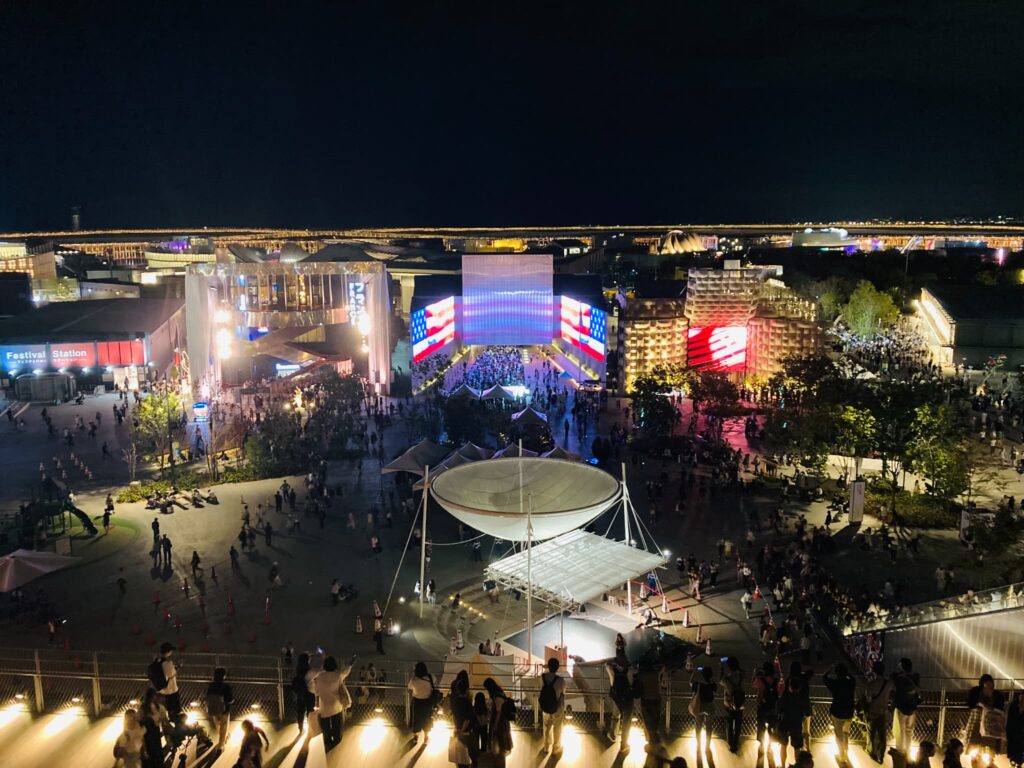
- Myaku-Myaku: The Mascot of the Osaka Expo
- The Symbolic Grand Ring: Reminds Me of My University
- The Expo Got Crowded Toward the End
- Pavilions I Visited
- The Italy Pavilion Was a Huge Hit: Showcasing Real Masterpieces
- The Italy Pavilion Boosted the Expo’s Reputation
- Why the Italy Pavilion Went All Out: A Gesture of Gratitude for the Milan Expo
- The Japan Pavilion at the Milan Expo: TeamLab’s Exhibit Drew Huge Crowds
- Hopes for the Future of Electronic Art: Eurobeat YASUKE
- Both the Japan and Italy Pavilions Overcame the Critics
- The Japanese Love Expos
- I Can’t Wait for the Next Riyadh Expo
Myaku-Myaku: The Mascot of the Osaka Expo
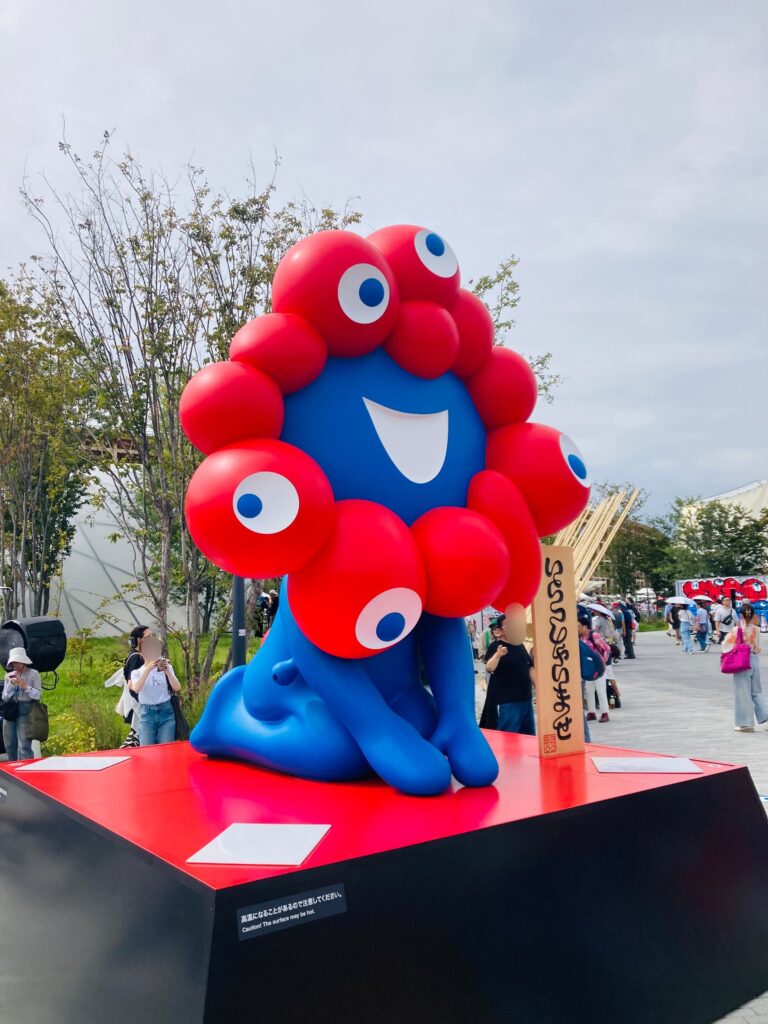
This is Myaku-Myaku, the official mascot of the Osaka Expo. At first, many people found its appearance creepy, so it wasn’t very popular. But over time, everyone got used to it, and it eventually became a fan favorite.
On the first day, I couldn’t get into any pavilions after entering the venue, so I ended up waiting in line for two hours to draw a Myaku-Myaku lottery. I won the lowest prize, third place.

The Symbolic Grand Ring: Reminds Me of My University
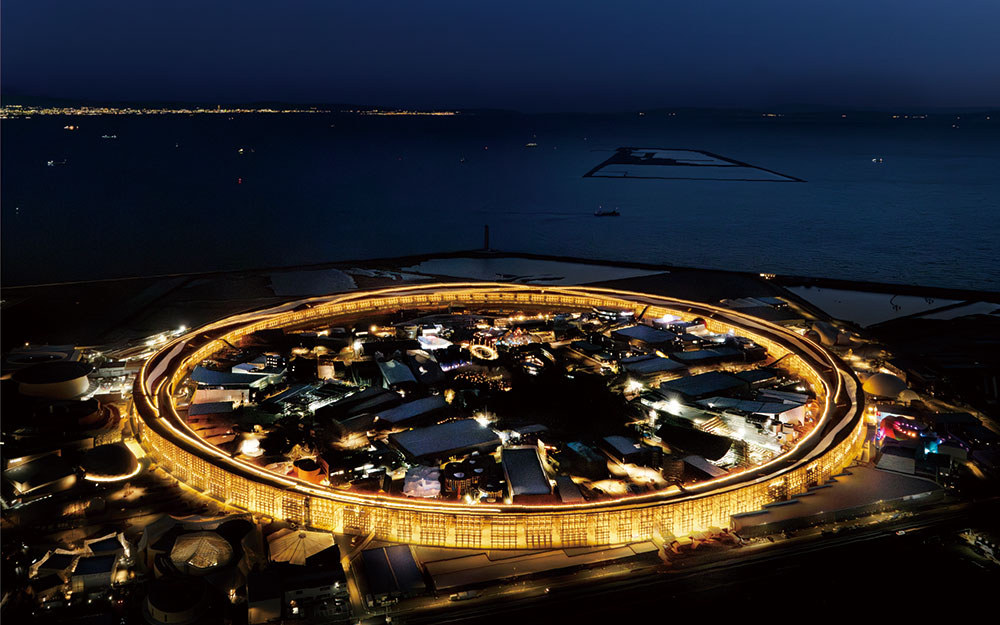
The Grand Ring, a huge wooden ring, built as a symbol of the Osaka Expo is said to be the largest wooden structure in the world as of 2025.
Its design reminded me of my alma mater, Tokyo University of Foreign Studies.

The circular layout made it easy to move between buildings, and on rainy days you could walk underneath without getting wet. The Grand Ring served the same purpose, giving visitors shade from the summer sun and shelter from the rain.
My university has 27 language majors. During the school festival, each language department sets up stalls around the circular walkway, serving food and drinks from their regions. You can try cuisines from all over the world and feel like you’ve traveled the globe in one day.
A circular building represents the shape of the Earth itself. For a world-themed event like the Expo, this design feels perfect. It brought back memories of my enjoyable university days.
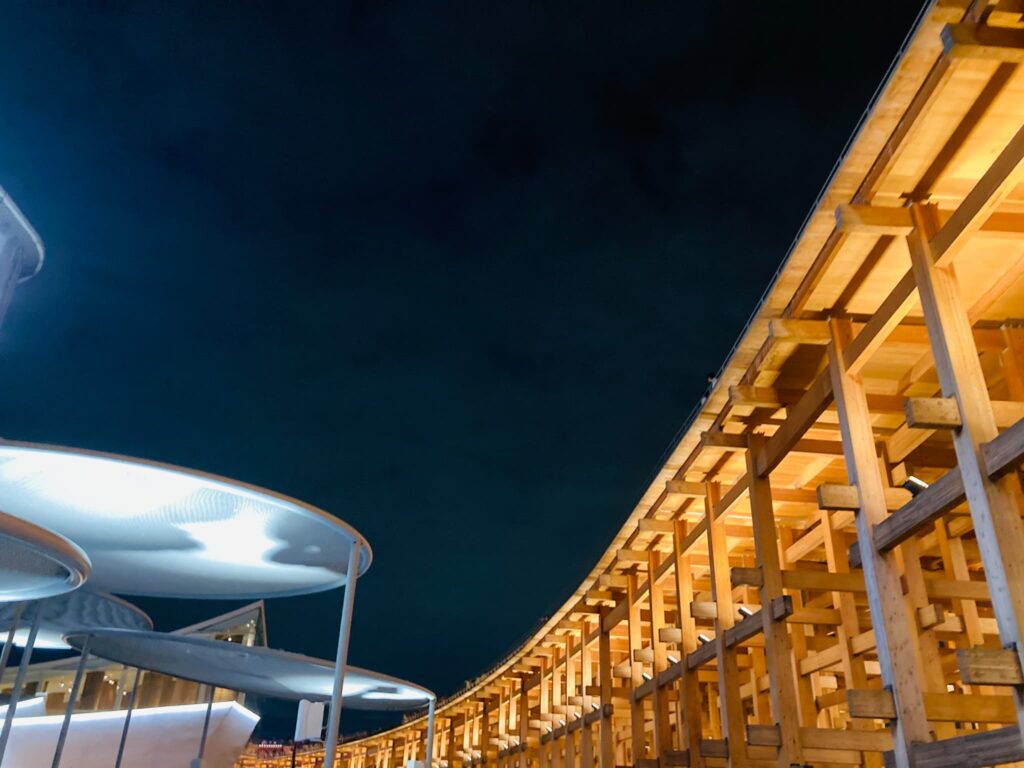
The Expo Got Crowded Toward the End
My friend and I had planned to visit in September to avoid the summer heat. But as the Expo grew more popular, the number of visitors skyrocketed toward the end, and by the time we went, it was packed.
From the moment we got off the train to the time we entered the gates, we were surrounded by crowds. Next time I attend an Expo, I’ll definitely go earlier in the season.
Pavilions I Visited
- Mozambique
- Portugal
- Thailand
- Cambodia
- Turkey
- Oman
- United Nations
I could only visit these seven pavilions over two days because it was so crowded. Still, walking around, admiring the architecture of pavilions, watching shows, fireworks, and drone performances was more than enough to make the trip enjoyable.
At the first pavilion I entered, Mozambique, I bought the “Yasuke Nuts,” which made me really happy. Apparently, they had just started selling them about a week before I arrived.
モザンビーク館、弥助ナッツ売っててヤバい。ビールに合って最高🍺 #大阪万博
Translation:
https://x.com/japanese_naoto/status/1971026733156716686?s=20
The Mozambique Pavilion was selling Yasuke Nuts, amazing. It went perfectly with beer 🍺 #OsakaExpo
I had hoped to visit all the pavilions representing the countries of my Preply students, but the ones from the United States, Canada, and the United Kingdom were so popular that I couldn’t get in.
The Italy Pavilion Was a Huge Hit: Showcasing Real Masterpieces
Among all the pavilions, the Italy Pavilion was by far the most popular. The line to enter stretched six to eight hours.
When you think of Italy, you think of art. The pavilion displayed real works such as the Farnese Atlas, Caravaggio’s The Entombment of Christ, and Leonardo da Vinci’s manuscripts.

Throughout the Expo, new exhibits were continuously added. On the final day, they even set up a one-day-only skating rink and a live marching band, keeping visitors entertained until closing time.
The Italy Pavilion Boosted the Expo’s Reputation
At first, the Osaka Expo faced harsh criticism from domestic media calling it a “waste of taxpayers’ money.” Because of that, the venue was nearly empty when it opened.
But once word spread about how impressive the Italy Pavilion was, public interest grew rapidly. Thanks to that, attendance surged, and many Japanese people came to feel genuinely grateful to Italy for their contribution.
MVPがいるとしたらイタリア館よなあ
イタリアがえげつない展示用意してきやがったってのが口コミで拡がってから、万博自体の風向きが大きく変わったような気がする。Translation:
https://x.com/blueblack_gblue/status/1977653500252492001
If there were an MVP, it would definitely be the Italy Pavilion.
It feels like the atmosphere of the Expo itself changed after word spread that Italy had brought an absolutely insane exhibits.
Why the Italy Pavilion Went All Out: A Gesture of Gratitude for the Milan Expo
In an interview, the representative of the Italy Pavilion, Mario Vattani explained:
――展示に力を入れる理由は
「日本は大切な国だからだ。ビジネスや外交上のつながりだけでなく、互いがひかれ合う深い関係がある。日本が万博を開くなら、イタリアは成功させるために貢献しなくてはならない。(2015年の)イタリア・ミラノ万博では、日本がとても美しいパビリオンを建ててくれた。その恩返しでもある」
Translation:
――Why did you put so much effort into the exhibition?“It is because Japan is an important country to us. Our relationship is not only based on business or diplomacy but on a deep mutual attraction. If Japan is hosting an Expo, Italy must contribute to its success. During the 2015 Milan Expo, Japan built a truly beautiful pavilion. This is also our way of returning that favor.”
https://www.yomiuri.co.jp/expo2025/feature/20250709-OYO1T50057/
One of my Italian students once told me something interesting I hadn’t realized before. Northern Italy is surrounded by tall mountains, which makes it, though a peninsula, almost like an island nation.
Island nations often develop unique cultures because of their isolation. I think that’s why both Italy and Japan have such distinctive cuisines and art traditions.
About six months ago, I went to a special exhibition of Botticelli’s Portrait of Simonetta Vespucci. The painting is owned by the Japanese company Marubeni.
丸紅ギャラリーにて、美しきシモネッタ展を鑑賞し、優雅にunch…✨
Translation:
Visited the Marubeni Gallery to see the Beautiful Simonetta Exhibition, and an elegant unch… ✨
*This post contains a dirty joke. In Japanese, “dirty joke” is called “下ネタ (shimoneta).” The title “Beautiful Simonetta” sounds to Japanese ears a bit like “Beautiful Dirty Joke.” I typed “unch,” not “lunch,” because the Japanese word for poop is “unchi.” I’m sorry, Ms. Simonetta.
Although it was just one painting, the exhibition included stories about Simonetta’s life and the controversies surrounding forgeries. It was surprisingly captivating. Japanese people really love Italian art.
The Japan Pavilion at the Milan Expo: TeamLab’s Exhibit Drew Huge Crowds
As the Italian representative mentioned, Japan’s pavilion at the Milan Expo was extremely popular, with lines lasting over ten hours.
It is said that TeamLab’s digital art installation caught their attention.
When I visited Singapore in 2019, I was amazed to see TeamLab’s works everywhere, from the Changi Airport to Marina Bay Sands and the National Museum of Singapore.
At the time, I didn’t understand why TeamLab was so popular there. Perhaps visitors from Singapore who had seen the Milan Expo brought that admiration home with them.
Hopes for the Future of Electronic Art: Eurobeat YASUKE
Speaking of electronic art, Eurobeat, developed in Germany and Italy but eventually became very popular in Japan. It continues to evolve in its own unique way.
One of my favorite AI songs to listen to while writing about Yasuke is called Eurobeat YASUKE.
There are a few reasons why such a song came to exist:
- The anime Initial D used Eurobeat tracks.
- Because of that, many Japanese people associate Eurobeat with cars.
- The Assassin’s Creed Shadows artbook included a kei truck (small Japanese truck,) probably AI-generated.
- Combining a Black samurai, a kei truck, and Eurobeat resulted in an absurd yet fascinating AI song.
Instead of mild historical revisionism, we find this kind of wild cultural fusion more entertaining and even refreshing.
Both the Japan and Italy Pavilions Overcame the Critics
The Milan Expo also faced strong opposition from some citizens. Reports say that riots broke out and Molotov cocktails were thrown at police soon after the opening, showing a level of protest far beyond what Japan experienced.
It seems that some anti-establishment groups joined the demonstrations. Interestingly, the 1970 Osaka Expo also had a protest group called the “万博破壊共闘派 (Expo Destruction Alliance).”
The 2021 Tokyo Olympics saw similar opposition. It seems that in every country, national projects attract criticism from anti-establishment groups. I do understand that they have their own justice, but I still have doubts about whether their methods are truly right.
In the end, anyway, both the Japan and Italy Pavilions helped make each other’s Expos a success. In a time when division is growing around the world, their warm and peaceful “diplomacy” felt especially meaningful.
The Japanese Love Expos
I don’t think Japan’s team at the Milan Expo set out to help Italy or boost its success. Japanese people just genuinely love Expos.
The 1970 Osaka Expo is still remembered fondly today. The 2001 film Crayon Shin-chan: The Adult Empire Strikes Back is based on the Expo and keeps that spirit alive for younger generations.

Even young people today have a sense of what the 1970 Expo was like thanks to that movie. I personally love it and have watched it at least five times.
The year 1970 was a turning point for Japan. The country had rebuilt itself after the war and was entering a period of rapid economic growth. From the Japanese point of view, it was also a time when the world felt peaceful and full of promise. For many, the Expo symbolized that bright future.
Japan also won a gold award in the exhibition category at the 2021 Dubai Expo, showing just how deeply Expos resonate with the Japanese spirit.
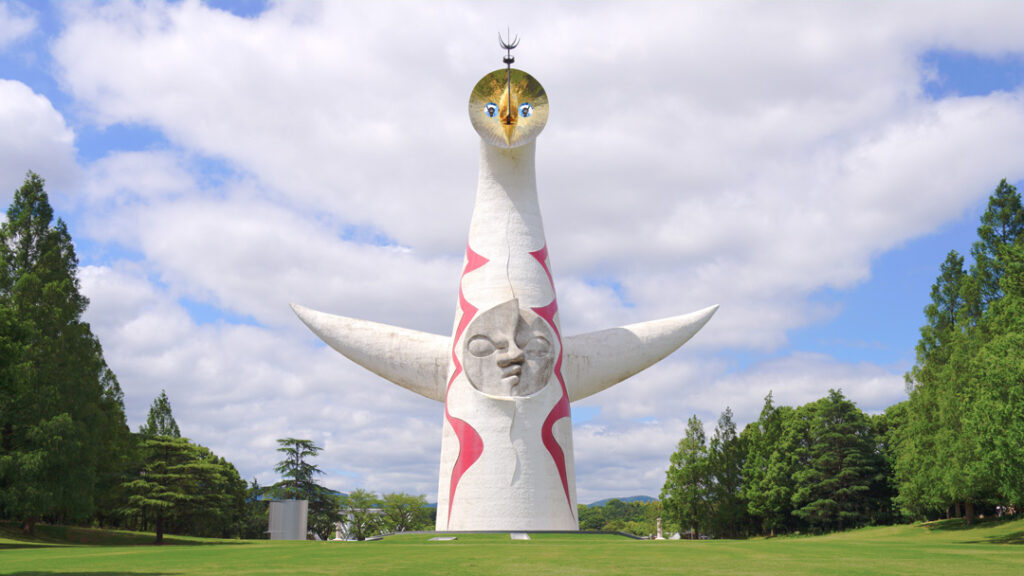
I Can’t Wait for the Next Riyadh Expo
The friend I invited to the Expo wasn’t interested at first and said one day would be enough. I convinced him to go for two days, and in the end, I’m glad I did.
He had been more excited about Universal Studios Japan than the Expo, but once we went, he enjoyed it so much that he said he wanted to go to the next Riyadh Expo too. He even mentioned wanting to start learning Arabic.
The UAE Pavilion this time was especially impressive. It was designed so that visitors could move smoothly without waiting in long lines. Inside, it was cool and filled with the relaxing scent of date palms. It was literally an oasis in the summer heat.
The Riyadh Expo is expected to be four times larger than the Osaka Expo. If we go, we plan to stay for at least a week. As with any Expo, it will probably get crowded toward the end, so visiting early is best.
We still don’t know what Japan will showcase, but I hope they create another spectacular pavilion at the Riyadh Expo!


